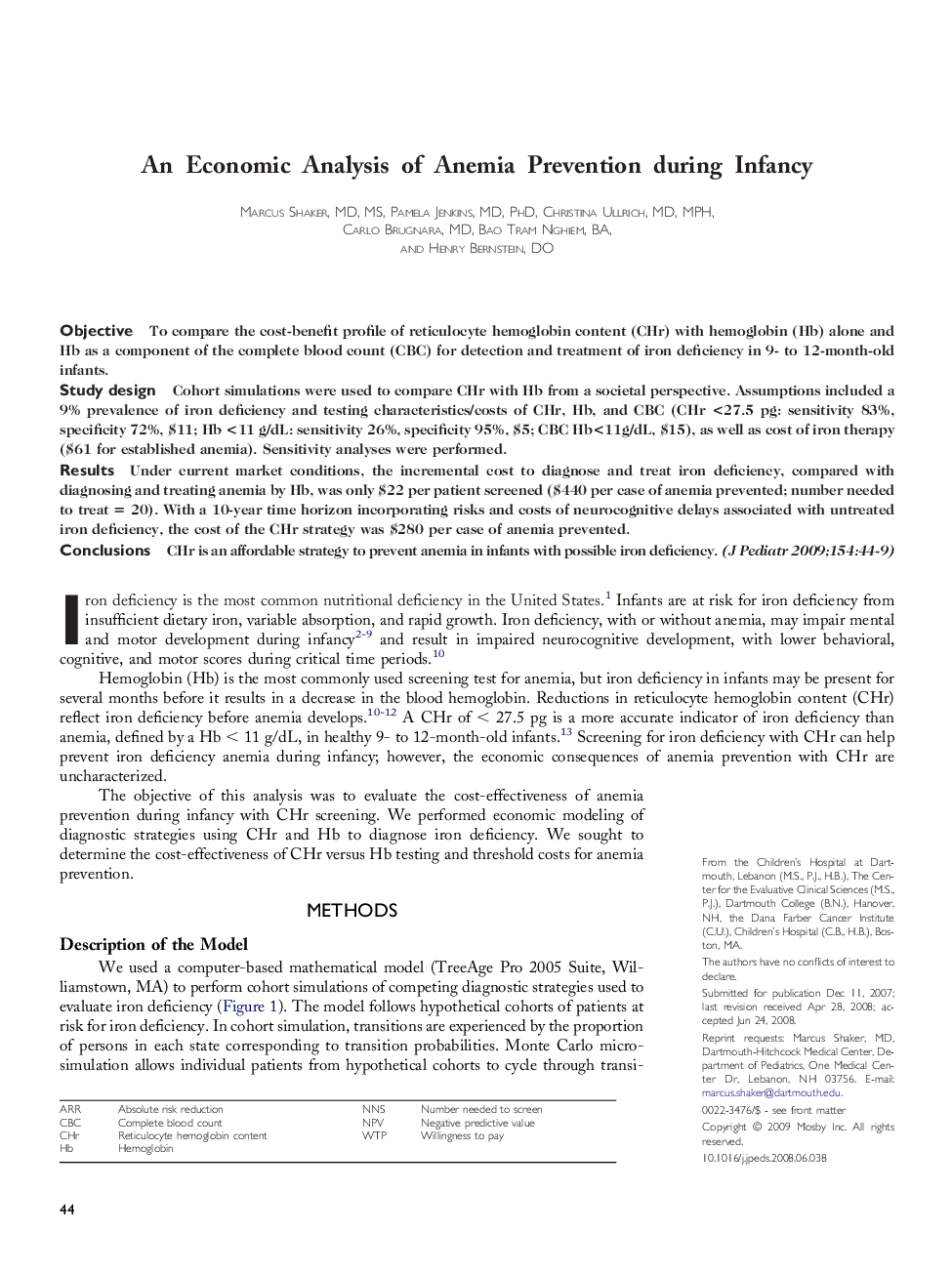| Article ID | Journal | Published Year | Pages | File Type |
|---|---|---|---|---|
| 4168264 | The Journal of Pediatrics | 2009 | 6 Pages |
ObjectiveTo compare the cost-benefit profile of reticulocyte hemoglobin content (CHr) with hemoglobin (Hb) alone and Hb as a component of the complete blood count (CBC) for detection and treatment of iron deficiency in 9- to 12-month-old infants.Study designCohort simulations were used to compare CHr with Hb from a societal perspective. Assumptions included a 9% prevalence of iron deficiency and testing characteristics/costs of CHr, Hb, and CBC (CHr <27.5 pg: sensitivity 83%, specificity 72%, $11; Hb <11 g/dL: sensitivity 26%, specificity 95%, $5; CBC Hb<11g/dL, $15), as well as cost of iron therapy ($61 for established anemia). Sensitivity analyses were performed.ResultsUnder current market conditions, the incremental cost to diagnose and treat iron deficiency, compared with diagnosing and treating anemia by Hb, was only $22 per patient screened ($440 per case of anemia prevented; number needed to treat = 20). With a 10-year time horizon incorporating risks and costs of neurocognitive delays associated with untreated iron deficiency, the cost of the CHr strategy was $280 per case of anemia prevented.ConclusionsCHr is an affordable strategy to prevent anemia in infants with possible iron deficiency.
